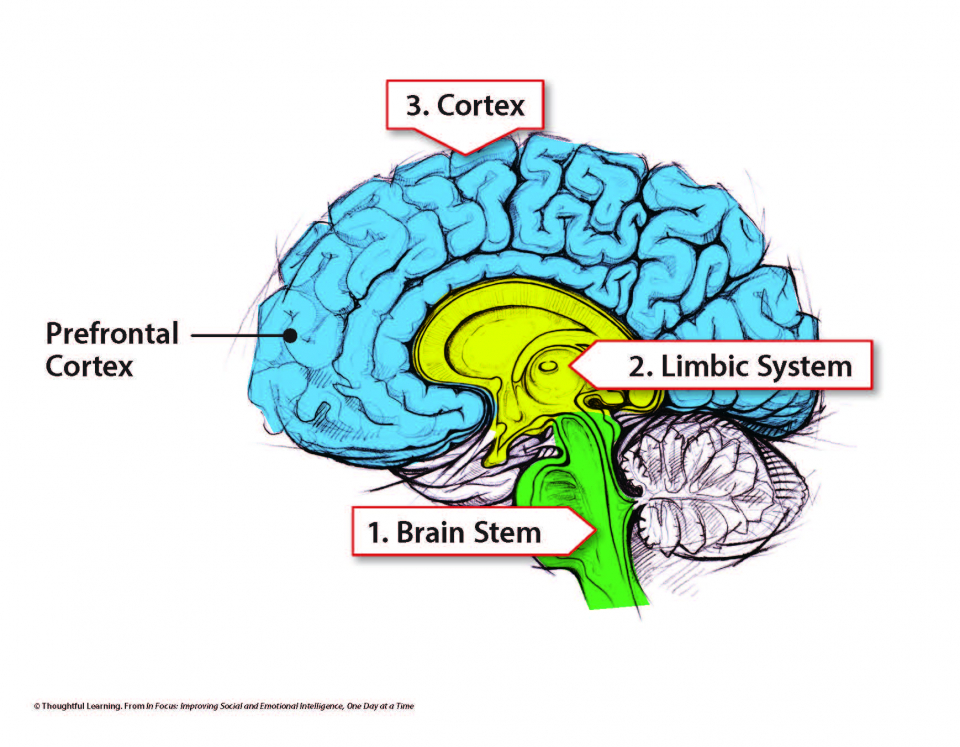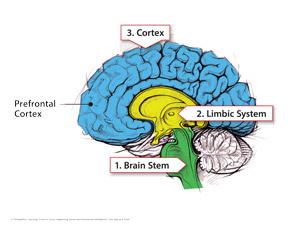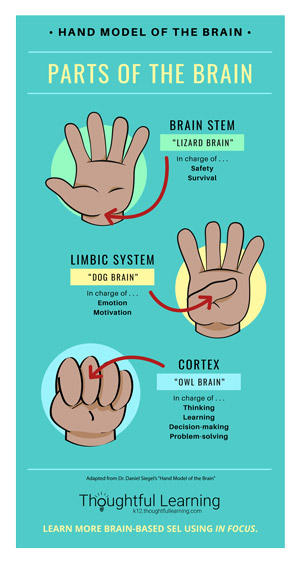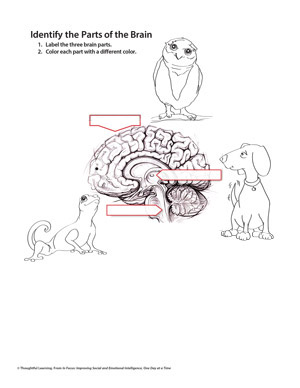
Teaching students about their brains and how they work will help them understand their emotions and thoughts.
While the brain is a complex structure, you can teach its basic parts in a way students will understand. Introduce your students to the “lizard,” “dog,” and “owl” areas of their brains with this quick, hands-on lesson from In Focus.
Learning About the Brain
- Today we are going to focus on learning about your brain.
- (Hand out or display this illustration of the brain.)
- Our brains have three important areas.
- (Point to the brain stem.) The first area is the brain stem, and its job is to watch for danger. It tells us when we feel unsafe. This part of our brain is like a lizard, so from now on, we will call this “the lizard” part of our brain. Lizards are really good at doing whatever they need to do to feel safe—they can run away, they can fight to protect themselves, or they can even stop and be quiet.
- (Next, point to the limbic area.) This area is the limbic system. This part of the brain generates emotions. Emotions supply important information that we use to make decisions and to motivate ourselves to act. This part of our brain is like a dog, so from now on, we will call this “the dog” part of our brain. Dogs feel happy, sad, scared, angry, hurt, and love.
- (Finally, point to the cortex.) This is the cortex. We use this part of our brains to think and learn. The cortex helps us to stop and think before we act—it is wise and smart. This part of our brain is like an owl, so from now on, we will call this “the owl” part of our brain. It understands things and makes sense out of them.
- (Display this graphic.) Now let’s imagine the structure of the brain using our hands.
- Raise your right hand like you’re giving a high five. With your other hand, point to where your right hand meets your wrist. This is the lizard part of the brain, the brain stem.
- Now move your right thumb to your palm, as if you’re holding up the number “4.” With your left hand, point to your right thumb. This is where the dog brain, or limbic system, is located.
- Finally, curl your four fingers over your thumb, making a fist. Point to the top of your fist. This is where the owl part of the brain, or cortex, is located.
- Let’s take a few moments to label and color the three main areas of the brain. (Hand out this illustration.)
Featured Downloads:
Display the Brain
Display this colorful diagram to point out parts of the brain.
Model the Brain
Have students model the brain with their hands.
Color the Brain
Invite students to color and label the brain parts.
Teaching Support
Consider this support as you engage with this activity.
Level
K–8
Learning Objectives
By completing this activity, students will . . .
- Recognize different parts of the brain.
- Connect safety to the brain stem.
- Connect emotions to the limbic system.
- Connect learning to the cortex.
Teaching Tips
- Print out and display the brain diagram on your classroom wall.
- As an alternative to coloring the brain, ask students to mold the three parts using different colors of Play-Doh.
- Teach students how the parts of the brain work together. Students must feel safe (brain stem) before they can effectively manage emotions (limbic system). And they must feel emotionally secure before they can learn (cortex).
- Teach SEL lessons that progress through all three levels of the brain.


